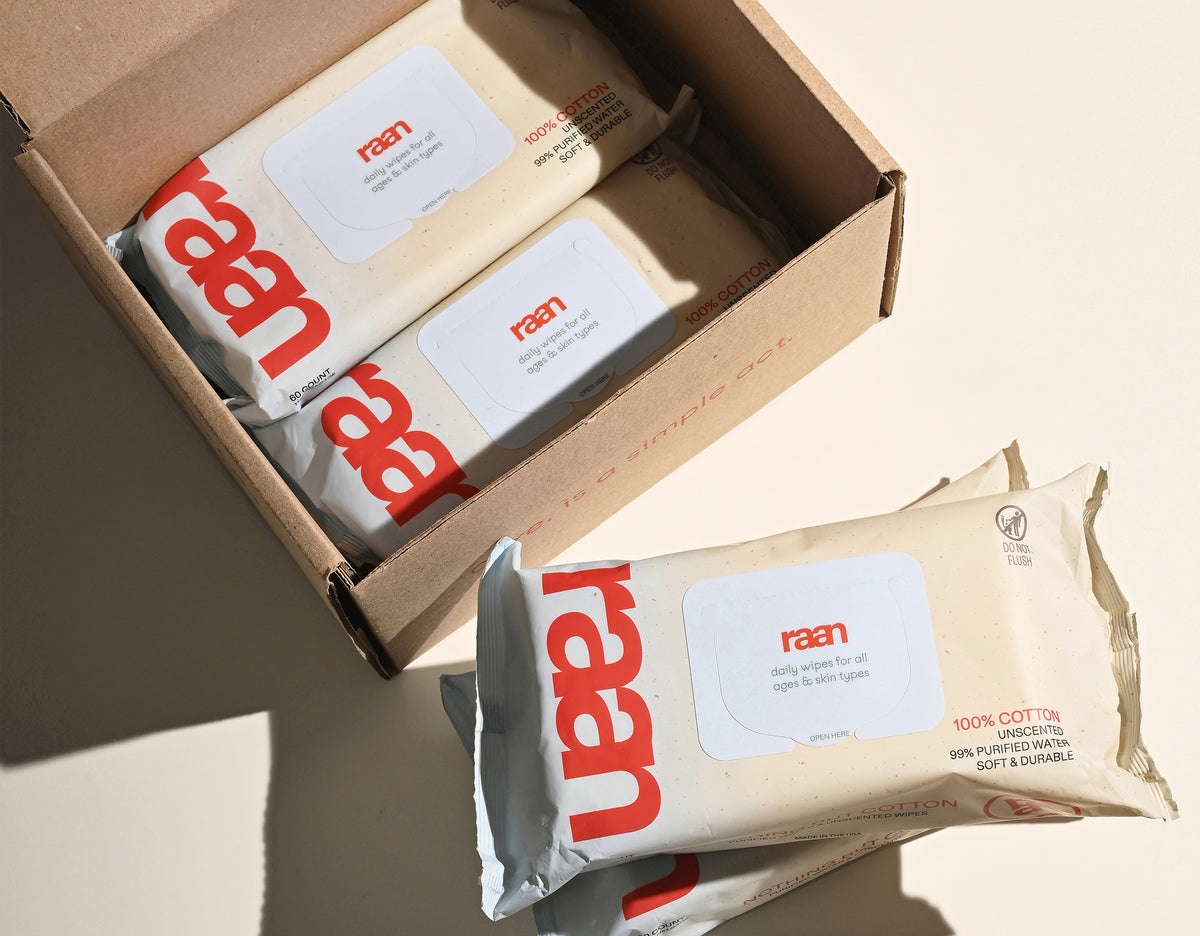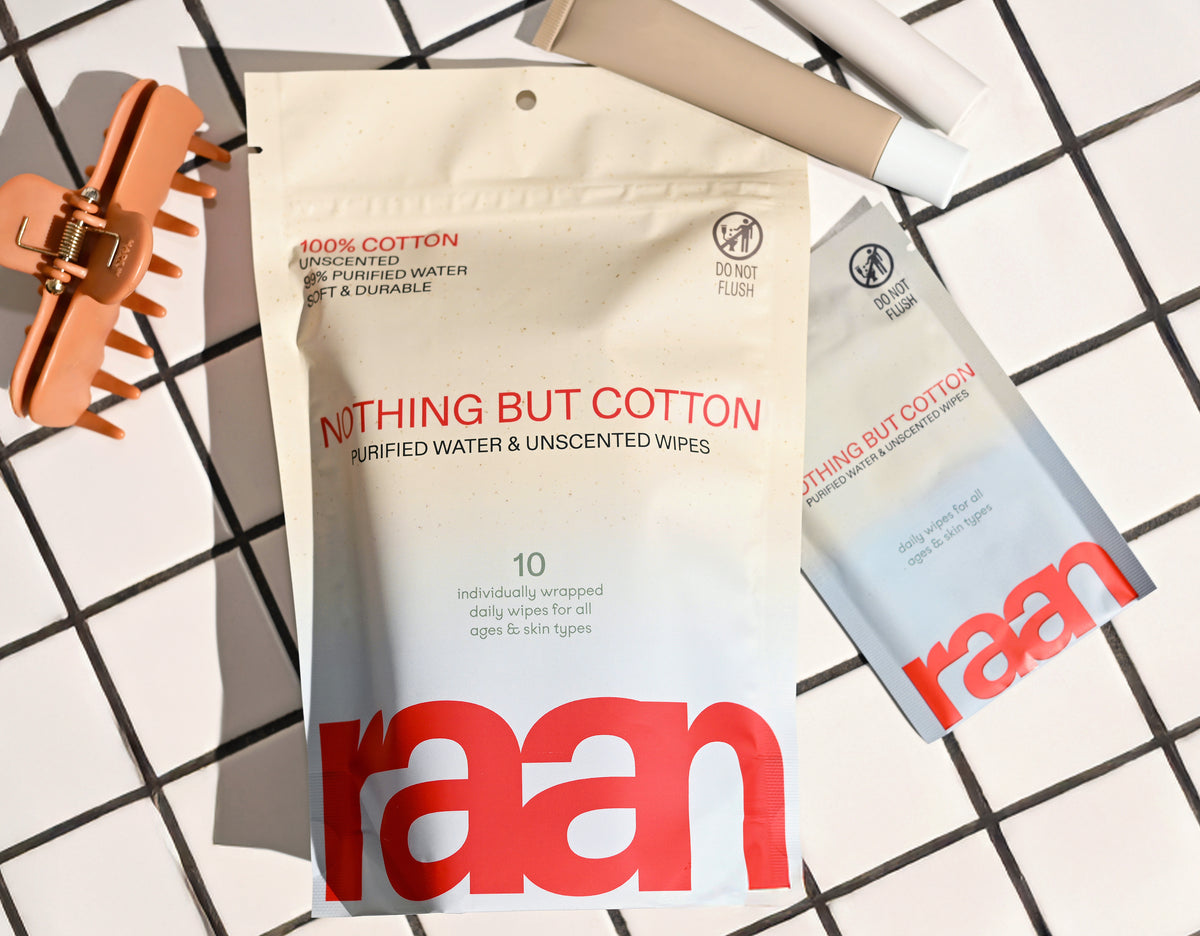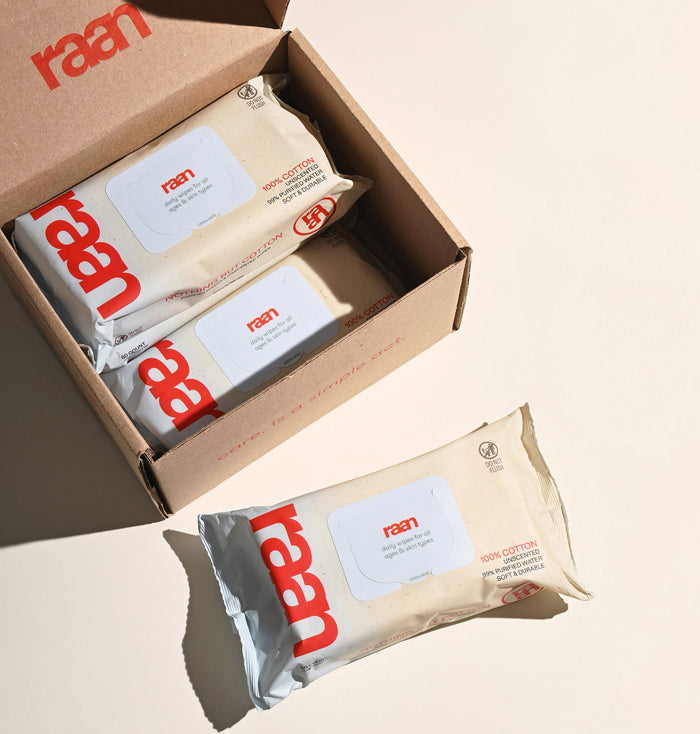Key Takeaways
- Organic baby wipes use certified materials that prioritize skin safety.
- They differ from conventional wipes by avoiding plastic fibers and synthetic preservatives.
- Organic wipes offer transparent formulations for safer baby care.
- Many products claim to be natural, but truly organic wipes meet higher standards.
Table of Contents
- What Makes a Baby Wipe "Organic"?
- Key Ingredients in Organic Baby Wipes – The Science of Simpler Care
- Organic vs. Conventional Baby Wipes – A Side-by-Side, Fact-Based Comparison
- Why Choose Organic Baby Wipes? Evidence-Backed Benefits for Skin, Home, and Planet
- How to Choose the Best Organic Baby Wipes for Your Family's Needs
- Real-World Uses for Organic Baby Wipes – Beyond Diaper Duty
- The Environmental Impact of Organic Baby Wipes – Responsible Choices, Real Results
- Troubleshooting & Solutions – Real Answers for Everyday Wipe Worries
Organic Baby Wipes: The Ultimate Clean Care Guide
The baby wipe industry is flooded with products claiming to be "natural" or "gentle," but organic baby wipes represent something fundamentally different. Unlike conventional wipes made from plastic fibers and synthetic preservatives, truly organic options use certified materials and transparent formulations that prioritize skin safety over shelf appeal. For parents seeking the purest choice, the only unbleached, 100% cotton baby wipe for sensitive skin stands out as a leading solution.
What sets organic wipes apart isn't just marketing, it's measurable differences in material composition, ingredient transparency, and third-party certifications. While conventional wipes often contain dozens of additives, the best organic alternatives rely on just a handful of EWG-verified ingredients, unbleached cotton, and food-grade preservatives. For on-the-go convenience, many families appreciate unbleached, 100% cotton pocket wipes for sensitive skin as a portable option.
Spotting misleading claims is straightforward: look for specific certifications on the front panel, not vague terms like "pure" or "gentle." If the ingredient list exceeds ten items or includes "parfum," "polyester," or unnamed "botanical extracts," it's not truly organic. For a deeper dive into the topic, see this comprehensive overview on baby wipes.
What Makes a Baby Wipe "Organic"?
True organic baby wipes meet specific certification standards for both materials and ingredients. The fabric must be grown without synthetic pesticides or fertilizers, while the solution contains certified organic botanicals like aloe vera. Independent certifications like EWG Verified or Natural Cotton Seal validate these claims.
The distinction matters because "natural" and "organic" aren't interchangeable. Natural wipes may use plant-based ingredients but lack certification requirements. Conventional wipes typically blend plastic fibers with synthetic preservatives and undisclosed fragrances.
| Type | Material | Preservatives | Certification | Ingredient Count |
|---|---|---|---|---|
| Organic | Certified organic cotton/bamboo | Food-grade only | Third-party verified | 3-6 ingredients |
| Natural | Plant-based blend | Plant-derived or synthetic | Self-certified | 8-15 ingredients |
| Conventional | Plastic fiber blend | Synthetic preservatives | None required | 15+ ingredients |
For families who want a convenient starter bundle, the starter set offers a curated selection of organic baby wipes and essentials.
Key Ingredients in Organic Baby Wipes – The Science of Simpler Care

Quality organic baby wipes contain remarkably few ingredients, each serving a specific function. Water makes up 99% of the solution, while organic aloe provides gentle moisturizing. Food-grade preservatives like sodium benzoate and potassium sorbate prevent bacterial growth without synthetic additives.
Unbleached, 100% cotton fabric matters more than most parents realize. Conventional wipes use plastic fiber blends that can irritate sensitive skin and don't biodegrade. Organic cotton maintains its natural softness and strength while remaining completely plastic-free.
Sample Organic Wipe Formula:
- Purified Water – Base solution (99%)
- Organic Aloe – Natural moisturizer
- Sodium Benzoate – Food-grade preservative
- Potassium Sorbate – Food-grade preservative
- Ethylhexylglycerin – Skin conditioning
- Citric Acid – pH balance
What's intentionally excluded tells the real story: no fragrances, parabens, phenoxyethanol, PEGs, or synthetic moisturizers. This minimalist approach reduces reaction risk while maintaining effectiveness for daily use on newborn skin. For those interested in a variety pack designed for life's messes, the mess-ready pack is a practical choice.
Organic vs. Conventional Baby Wipes – A Side-by-Side, Fact-Based Comparison
The differences between organic and conventional baby wipes extend beyond ingredient lists to fundamental material choices and safety standards. Conventional wipes prioritize shelf stability and cost efficiency, while organic options focus on skin compatibility and environmental impact.
| Criteria | Organic Baby Wipes | Conventional Wipes | "Natural" Wipes |
|---|---|---|---|
| Main Material | 100% organic cotton, unbleached | Plastic fiber blend (polyester/rayon) | Plant-based blend with synthetics |
| Preservative System | Food-grade only (sodium benzoate) | Synthetic preservatives, parabens | Mixed plant/synthetic preservatives |
| Ingredient Transparency | Full disclosure, EWG verified | Vague terms, "fragrance" undisclosed | Partial disclosure, marketing claims |
| Skin Safety Profile | Minimal reaction risk, newborn-safe | Higher irritation potential | Moderate sensitivity risk |
| Environmental Impact | Biodegradable cotton, reduced plastic | Plastic fibers, non-biodegradable | Partially biodegradable |
For newborn diaper changes, organic wipes eliminate guesswork about skin reactions. The unbleached cotton feels noticeably softer than plastic-blend alternatives, while the minimal ingredient formula reduces the variables that might cause sensitivity.
Face and hand cleanups reveal another key difference: conventional wipes often leave a residue from synthetic moisturizers and fragrances. Organic baby wipes clean without film or scent, making them suitable for sensitive facial skin and quick refreshes throughout the day. For more on choosing the right wipes for delicate skin, see this guide to best baby wipes for sensitive skin.
Why Choose Organic Baby Wipes? Evidence-Backed Benefits for Skin, Home, and Planet
Research shows that 25% of babies experience diaper rash or skin irritation from conventional wipes containing synthetic preservatives and fragrances. Organic alternatives with minimal formulations significantly reduce this risk, particularly during the vulnerable first six months when skin barrier function is still developing. For a scientific perspective on skin reactions and baby wipes, see this external resource.
The immediate benefits extend beyond babies. Adults with eczema, rosacea, or chemical sensitivities find organic baby wipes gentle enough for facial use and post-workout refreshes. The unbleached cotton doesn't scratch or leave lint, while the absence of synthetic fragrances prevents respiratory irritation in sensitive individuals.
Key Stat: Conventional wipes can take 100+ years to decompose due to plastic fiber content, while 100% cotton wipes biodegrade in 1-5 months under proper conditions.
Long-term environmental impact becomes significant with daily use. A family using 8-10 wipes daily generates approximately 3,000 wipes annually. Choosing plastic-free, biodegradable options eliminates roughly 2 pounds of persistent plastic waste per year while supporting organic farming practices that rebuild soil health.
The health benefits matter most for frequent skin contact scenarios: diaper changes, face cleaning, hand sanitizing, and quick cleanups. When products touch skin multiple times daily, ingredient purity becomes a cumulative health factor rather than a one-time consideration.
How to Choose the Best Organic Baby Wipes for Your Family's Needs

Start with certification verification: look for EWG Verified, USDA Organic, or Natural Cotton Seal logos on the front panel. These third-party certifications ensure ingredients and materials meet specific purity standards beyond marketing claims.
Review ingredient panels in under 30 seconds using this framework: count total ingredients (should be under 8), identify the preservative system (food-grade preferred), and scan for red-flag terms like "parfum," "polyester," or "botanical extracts" without specific plant names. If you shop at major retailers, you may also want to compare baby wipes at Target for a broader perspective.
Quick Shopping Checklist:
- Squeeze test: Wipe should feel moist but not dripping
- Material check: Look for "100% cotton" or "unbleached cotton"
- Scent test: Should smell like water, not fragrance
- Certification scan: Find third-party verification logos
Troubleshooting common issues starts with patch testing: use one wipe on a small skin area and wait 24 hours before full use. If wipes dry out quickly, the packaging may lack proper sealing, look for resealable pouches rather than hard plastic containers.
For families with multiple needs, prioritize versatility. The best organic baby wipes work equally well for diaper changes, face cleaning, and general household messes. This eliminates the need for separate products and simplifies your cleaning routine.
Real-World Uses for Organic Baby Wipes – Beyond Diaper Duty
Modern families discover that quality organic baby wipes excel far beyond traditional baby care. The gentle, plastic-free formula makes them ideal for removing makeup, cleaning sticky hands after meals, and refreshing skin during travel or post-workout situations.
Pet owners appreciate the safety profile for quick paw cleaning and fur spot-cleaning. Unlike conventional wipes with synthetic chemicals, organic options won't harm pets if they lick their cleaned paws. The unbleached cotton is gentle for both pets and people, making these wipes a versatile staple for every household.
The Environmental Impact of Organic Baby Wipes – Responsible Choices, Real Results
The environmental footprint of organic baby wipes extends from raw material sourcing through disposal, with significant differences compared to conventional alternatives.
Material sourcing advantages: Unbleached cotton eliminates chlorine processing, reducing water pollution and chemical runoff. Organic cotton farming avoids synthetic pesticides and fertilizers that contaminate soil and groundwater systems.
Manufacturing impact: Minimal processing preserves the natural cotton fibers while reducing energy consumption. Food-grade preservatives require less intensive chemical processing compared to synthetic alternatives found in conventional wipes.
Packaging Innovation: Advanced organic wipe packaging uses 70% less plastic than standard hard-lid containers, with pouches containing 35% post-consumer waste content.
Disposal considerations: Cotton-based wipes biodegrade significantly faster than polyester blends, typically breaking down within months in proper composting conditions rather than persisting for years. For more on hygiene and diaper care, see this external resource.
Practical waste reduction tips: Use only what you need for each mess, store packages properly to prevent drying, and dispose of used wipes in regular waste, never flush, even when labeled biodegradable.
Packaging responsibility: Choose brands with recyclable outer packaging and minimal plastic components. Look for companies that provide clear disposal instructions and take responsibility for their environmental claims with specific data.
Every organic baby wipe choice contributes to reduced plastic pollution, cleaner manufacturing processes, and more sustainable disposal outcomes that benefit both your family and the broader environment.
Troubleshooting & Solutions – Real Answers for Everyday Wipe Worries

Even quality organic baby wipes can present challenges. Here's how to solve the most common issues parents encounter.
Preventing wipe dryness: Store packages in cool, dry locations away from direct sunlight. Press the seal firmly after each use and consider transferring wipes to airtight containers if the original packaging seems compromised.
Addressing skin irritation: Even organic formulas can cause reactions in highly sensitive individuals. Discontinue use immediately, rinse the affected area with water, and consult a healthcare provider if irritation persists. Always patch test new products on a small area before regular use.
Wipes drying out too quickly: Ensure the packaging is properly sealed after each use. If wipes are exposed to air, they may lose moisture faster. Consider storing the pack in a resealable pouch or airtight container for longer-lasting freshness.
Residue or lint left behind: Unbleached cotton wipes are designed to minimize lint, but occasional fibers may appear. Gently shake out wipes before use and avoid excessive rubbing on delicate skin.
Frequently Asked Questions
What certifications should I look for to ensure baby wipes are truly organic?
Look for certifications like EWG Verified and the Natural Cotton Seal, which confirm that materials and ingredients meet strict standards without synthetic pesticides or fertilizers. These independent verifications ensure transparency and genuine organic sourcing rather than vague or unsubstantiated claims.
How do organic baby wipes differ from conventional and natural wipes in terms of materials and ingredients?
Organic baby wipes use unbleached, 100% cotton fibers and a minimalist formula with just a few EWG-verified, food-grade ingredients. Conventional wipes often contain plastic fibers, synthetic preservatives, and dozens of additives, while many 'natural' wipes lack clear certification and may still include plastics or fragrances.
What are the key benefits of choosing organic baby wipes for my baby's skin and the environment?
Organic baby wipes reduce exposure to plastics and synthetic chemicals, lowering irritation risk for sensitive skin. They also use biodegradable fibers and responsibly sourced ingredients, which means less environmental impact compared to conventional wipes packed with hidden plastics and synthetic additives.
How can I identify misleading claims when shopping for organic baby wipes?
Watch out for vague terms like 'pure' or 'gentle' without clear certifications. Avoid wipes with long ingredient lists, synthetic preservatives, 'parfum,' polyester, or unnamed botanical extracts. Genuine organic wipes keep formulas simple, transparent, and backed by trusted third-party certifications.






